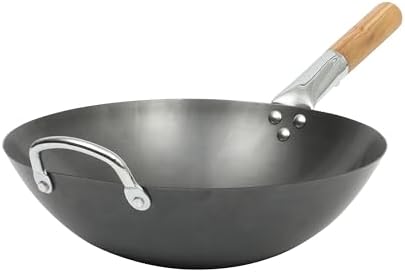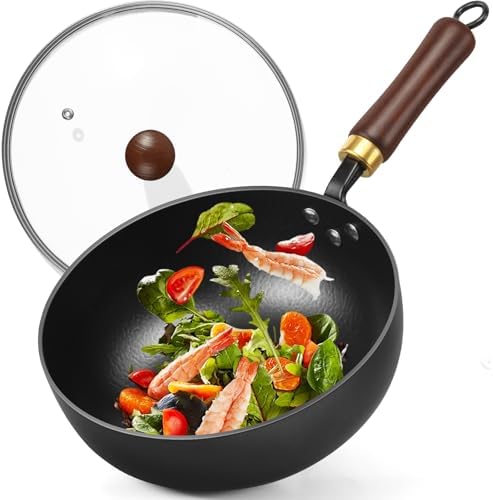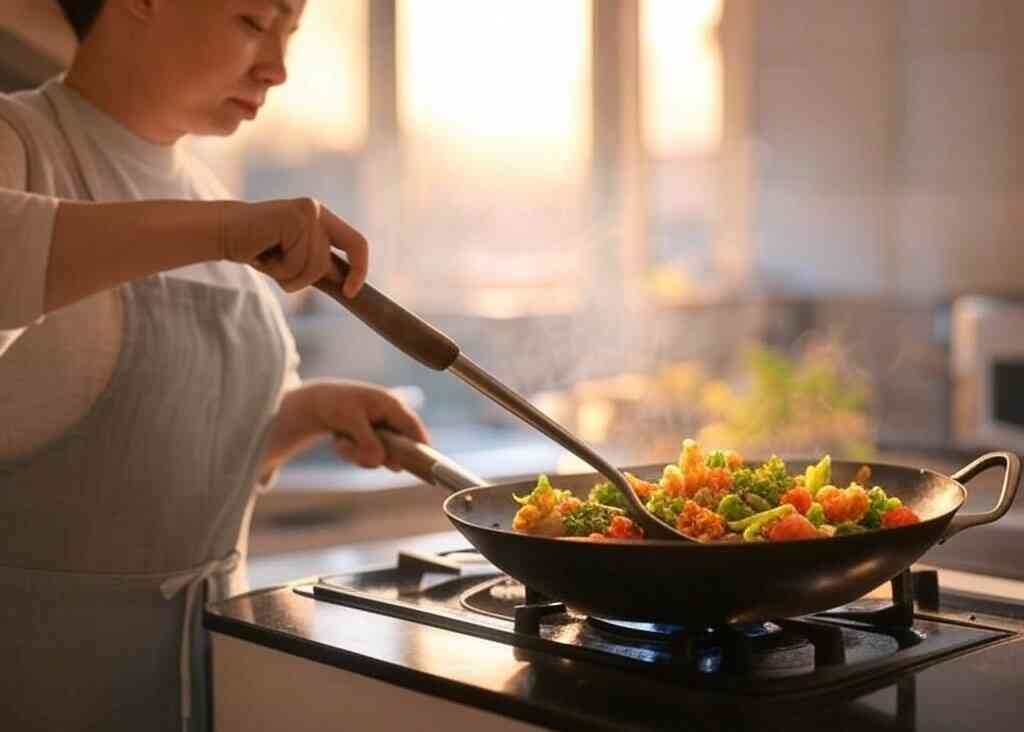When you are buying a wok, one of the first decisions you will have to make is whether to get a round bottom or a flat bottom model. This small choice will have a significant impact on how your wok will perform in your kitchen. Each style has its own advantages, and understanding the difference will enable you to select the most appropriate wok for your cooking style and stovetop setup.
Understanding Wok Bottom Designs
A round bottom wok is the traditional option in Chinese cuisine. It is meant to be used with open flames and enables heat to be evenly distributed throughout the entire surface. Stir frying, which is the most typical application of a wok, is highly benefited by this feature. The curved nature of the wok makes tossing ingredients evenly and fast very simple.
On the other hand, a flat bottom wok is a modern design developed for Western kitchens, specifically for electric or induction stovetops. The flat bottom allows more direct contact with the heating element, which improves temperature control and stability. These woks still have high, sloping sides, which maintain the ability to stir fry perfectly, while the flat bottom adds functional compatibility with most stoves.
Cooking Performance Overview
- Heat Distribution: Round bottom woks win here. The uniform curve distributes heat more efficiently, especially on a gas fire, where the flame can wrap around the wok. Flat bottom woks present a reduced heated surface, and this can result in uneven cooking if not closely monitored.
- Stability: Flat bottom woks are inherently more stable. On electric or glass top ranges, round bottom woks typically require a wok ring to hold them. They may wobble or tip with or without a ring. A flat bottom sits securely on any surface without extra equipment.
- Versatility: If you’re cooking on a standard Western kitchen stove, a flat bottom wok is more versatile. It will perform well on electric, gas, and induction cooktops without any issues. Round bottom woks, while ideal for traditional stir frying, are usually limited to gas stoves and may not sit flat without modification.
- Ease of Use: New users may find flat bottom woks easier to use since they are stable. Round bottomed woks call for greater experience in tossing techniques and heat regulation, which may deter new users.
Material and Handle Considerations
Independent of bottom shape, both types of woks come in carbon steel, the professional chefs’ material of choice for its fast heating and non stick seasoning capabilities. In deciding, also look for handle style: a long handle provides increased control for tossing, while loop handles allow for added grip and balance, particularly for heavier woks.
Maintenance and Care
Both round and flat bottom woks must be seasoned and maintained. Both their functionality and lifespan depend on how well they are cared for. Never use abrasive soaps, dry immediately after washing, and apply a thin coat of oil to store.
Which is Right for You?
Choose a round bottom wok if you:
- Cook with a gas stove.
- Want the most authentic wok cooking experience.
- Don’t mind using a wok ring.
Choose a flat bottom wok if you:
- Use electric, glass, or induction stovetops.
- Prefer a more stable and beginner friendly tool.
- Don’t wish to use additional accessories like wok rings.
Before making your choice
Although the round bottom wok may be sworn to by traditionalists, modern kitchens just need a more practical option and that’s where the flat bottom comes in. Take your stovetop type, cooking method, and personal comfort level into consideration before making your choice. With the right bottom shape, your wok cooking will be safer, more efficient, and a whole lot more fun.shape, your wok cooking will be safer, more efficient, and far more enjoyable.











